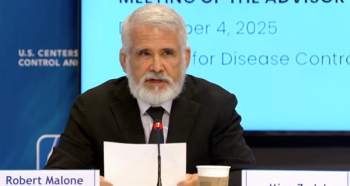
Marijuana use increases risk of heart attack and stroke: AHA
Risk rises even if patients don’t use tobacco products, study finds.
Using marijuana leads to greater risk of heart attack and stroke, even if patients do not use tobacco products, according to new research.
The findings were part of
“Despite common use, little is known about the risks of cannabis use and, in particular, the cardiovascular disease risks,” lead author Abra Jeffers, PhD, said in a
“The perceptions of the harmfulness of smoking cannabis are decreasing, and people have not considered cannabis use dangerous to their health,” Jeffers said. “However, previous research suggested that cannabis could be associated with cardiovascular disease. In addition, smoking cannabis – the predominant method of use – may pose additional risks because particulate matter is inhaled.”
The study involved 434,104 adults aged 18 to 74 years, across 27 states and two territories, from 2016 to 2020. The figures came from the Behavioral Risk Factor Suveillance System, a national survey conducted by the U.S. Centers for Disease Control and Prevention. Participants were asked about frequency of marijuana use and other cardiovascular risk factors such as cigarette smoking, alcohol consumption, body mass index, diabetes and physical activity. Respondents also reported if physicians or other health professionals told them CHD, or if they ever had a heart attack or stroke.
Controlling for the other risk factors, past 30-day cannabis use was associated with MI, stroke, and CHD among adults, according to the study. Daily users had 25% higher odds of heart attack and 42% higher odds of stroke than nonusers. For men younger than 55 years old and women younger than 65 years old, at risk for premature cardiovascular disease, marijuana use was associated with 36% higher combined odds of CHD, heart attack and stroke, regardless of use of traditional tobacco products.
“Our sample was large enough that we could investigate the association of cannabis use with cardiovascular outcomes among adults who had never used tobacco cigarettes or e-cigarettes,” Jeffers said. “Cannabis smoke is not all that different from tobacco smoke, except for the psychoactive drug: THC vs. nicotine. Our study shows that smoking cannabis has significant cardiovascular risk risks, just like smoking tobacco. This is particularly important because cannabis use is increasing, and conventional tobacco use is decreasing.”
Among the study participants, daily use was 4% and nondaily use was 7.1%, with smoking being the most common form of consumption (73.8%). A full 88.9% were nonusers. The researchers noted from 2002 to 2019, past-year adult cannabis use rose from 10.4% to 18%, while national surveys found adult belief in great risk of weekly use dropped from 50% in 2002 to 28.6% in 2019.
“The findings of this study have very important implications for population health and should be a call to action for all practitioners, as this study adds to the growing literature that cannabis use and cardiovascular disease may be a potentially hazardous combination,” said Robert L. Page II, PharmD, MSPH, FAHA. Page was chair of the volunteer writing group for the 2020
“As cannabis use continues to grow in legality and access across the U.S., practitioners and clinicians need to remember to assess cannabis use at each patient encounter in order to have a nonjudgmental, shared decision conversation about potential cardiovascular risks and ways to reduce those risks.”
Newsletter
Stay informed and empowered with Medical Economics enewsletter, delivering expert insights, financial strategies, practice management tips and technology trends — tailored for today’s physicians.















